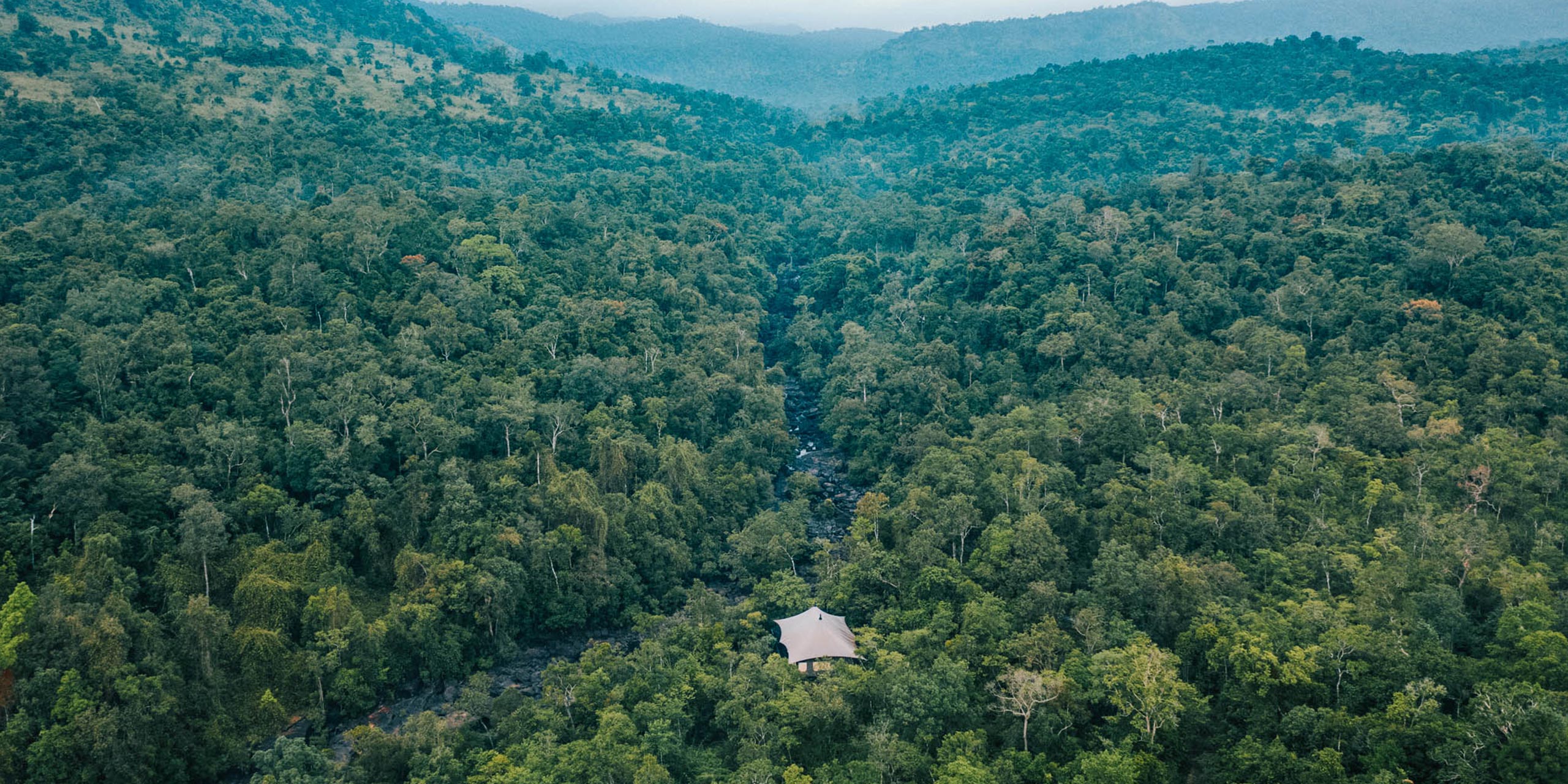
In the depths of the Cambodian jungle, some things go bump in the night, and other things go bump in the morning.
We are puttering our way up a river in the far western province of Koh Kong towards the Tatai waterfall. Once there we will leap from rocky outcrops into deep pools, have our bodies pounded by cascades of foaming water, and receive complimentary skin-removal treatments from fussing, matronly monkeys.
For the moment though, the smooth sailing has encountered some unexpected turbulence.
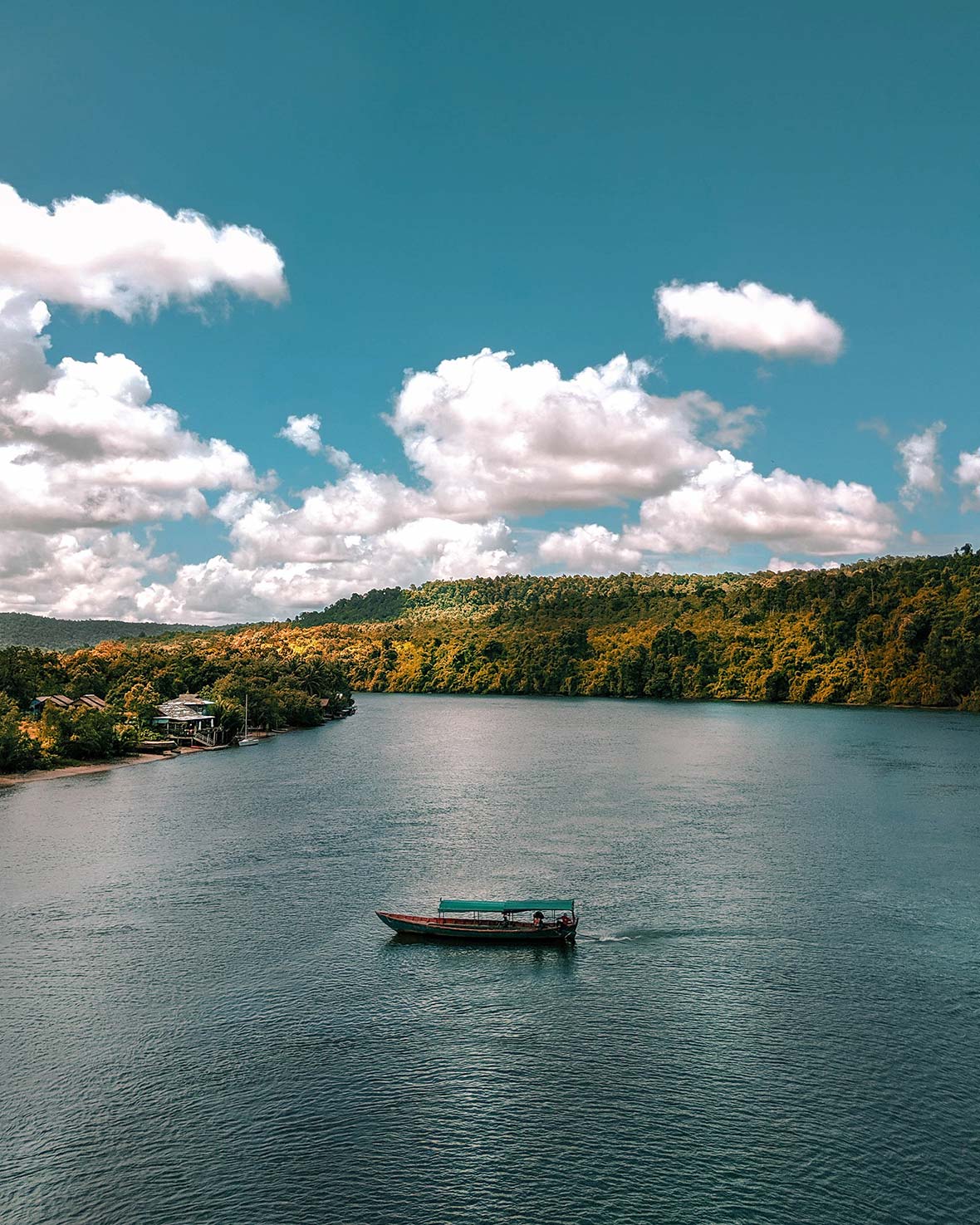
I didn’t know there were crocodiles here.
As the boat passes underneath a clump of coconut palms that jut out almost horizontally over the tranquil water, a series of ominous thuds can be heard on the underside of the craft.
“What’s that?” says Innes, a jovial Glaswegian who had been enjoying the first of many Angkor beers. “I didn’t know there were crocodiles here.”
“No, there are no crocodiles here anymore. The boat just ran over some discarded coconut husks,” laughs our guide Wee.
“There’s snakes though, lots of them.” Proving his point he gestures towards the teenager on the tiller, a doleful-looking lad whose withdrawn countenance is in sharp contrast to that of Wee and our other guide, Sylvester Stallone fan, “Rambo”.
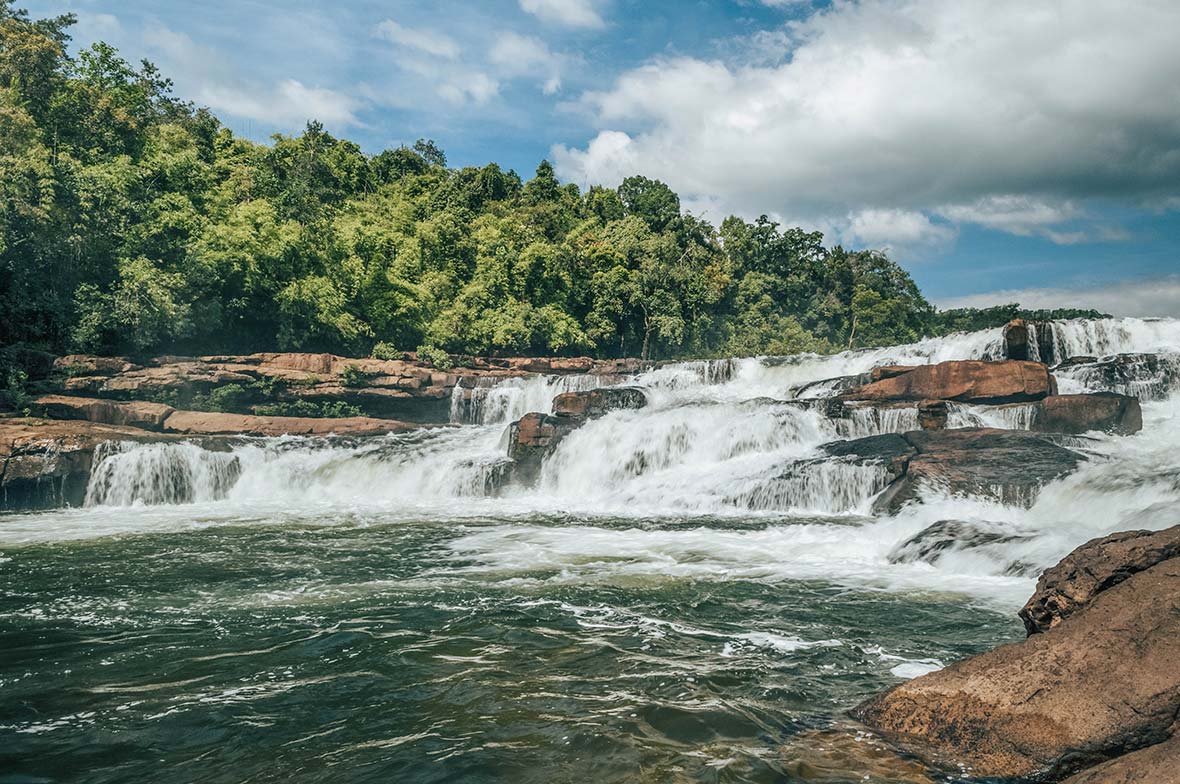
“His Dad died two months ago. He was hunting in the jungle and a cobra got him. Nobody could do anything for him.”
Cobras are not the only nefarious elements to have found solace amidst the virgin jungle here.
It was from these remote border areas that fanatical Khmer Rouge cadres kept alive Cambodia’s nightmarish civil war. More recently, impoverished locals — forgotten by the government in distant Phnom Penh, 400 km away — have plundered the protected forests to boost their meager earnings through illegal logging, smuggling, and poaching.
Such activities have exacted a significant environmental toll on this wondrous landscape of emerald forest, wildflowers, rushing streams, and meandering rivers. Thankfully the arrival of tourism in the area is, at last, providing an affirmative alternative to destructive old habits.
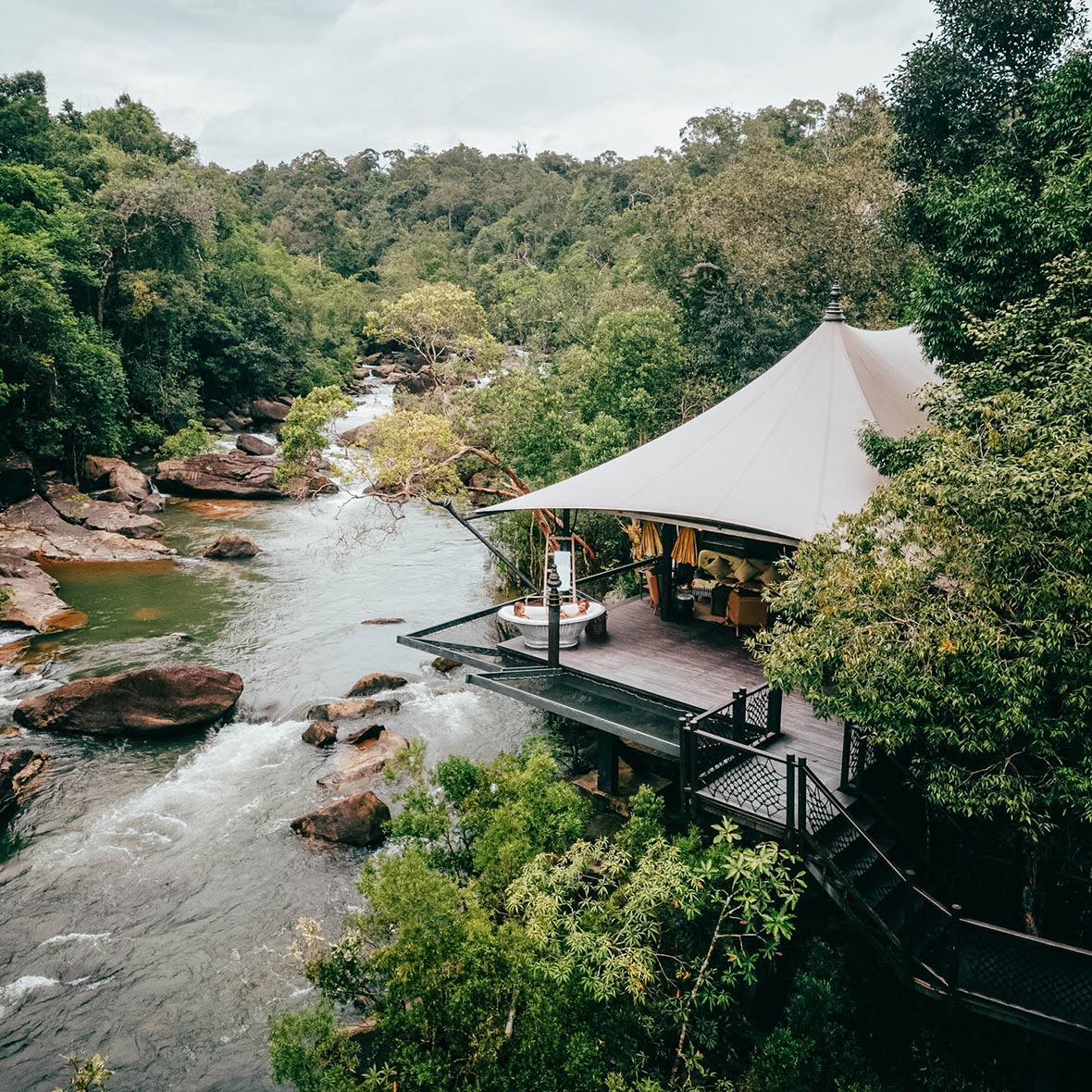
“Before we had nothing,” continues Wee. “We didn’t have any option but to go into the jungle to hunt. It is a very dangerous life. There are bears, elephants, snakes, and even tigers. You also had to avoid the rangers who would arrest you or even shoot you. Tourism has taught us new skills and given us new opportunities.”
What’s more encouraging is that the clutch of developments in the area broadly shares a similar ethos of being in as much harmony as possible with their surroundings.
Notable sustainability trailblazers in the area include Shinta Mani Wild where American hotel designer Bill Bensley took his flamboyant aesthetic and passion for conservation into the heart of one of Cambodia’s most remote jungle areas.
Bensley bought the land on which the all-inclusive luxury tented camp is located back in 2010 to put it to altruistic use. And the high-yield, low-impact camp is getting plenty of traction with tourists.
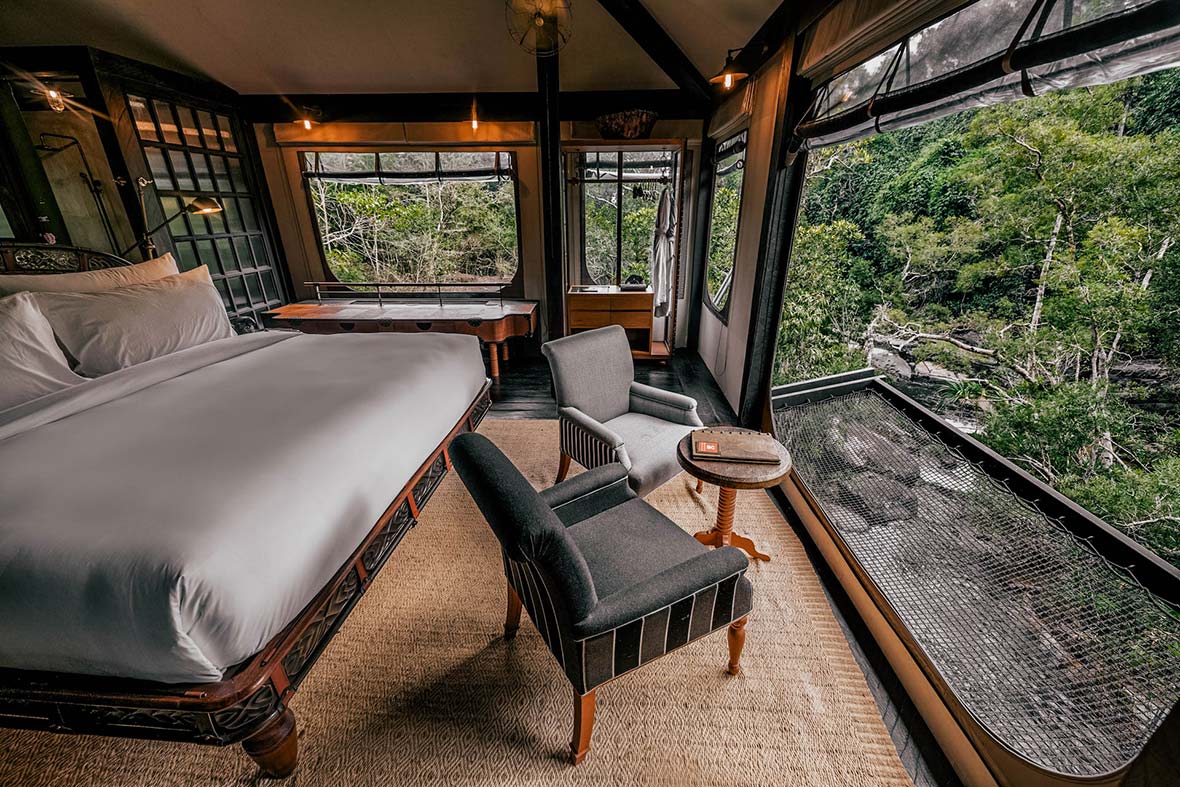
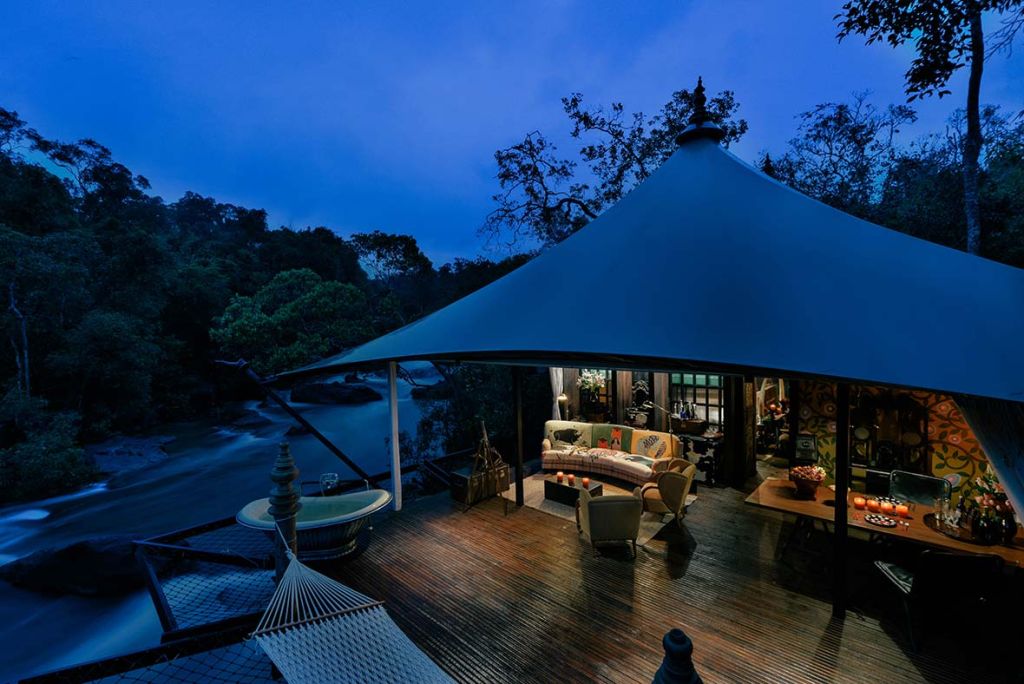
Luxury adventures include opportunities to join armed Wildlife Alliance rangers on their daily anti-poaching patrols or hop aboard an expedition boat – also designed by Bensley, naturally – to discover the waterways, flora, and fauna of this unique ecosystem.
It is not just locals for whom these projects have been a Godsend. For visitors, they provide the missing link in a chain that links the entire southern coast of Cambodia from Thailand to Vietnam. It’s a route that takes in pristine jungle, untouched islands, sleepy towns, and haunted hill stations. It even finds the time to squeeze in one of South East Asia’s few remaining backpacker fleshpots, the rambunctious town of Sihanoukville.
Saner travelers would tackle the coast with the sedate relish it deserves. However, with a desk job awaiting me I take one last dip in the (crocodile-free) river and ready myself for the four-hour car journey along Highway 48 to Sihanoukville.
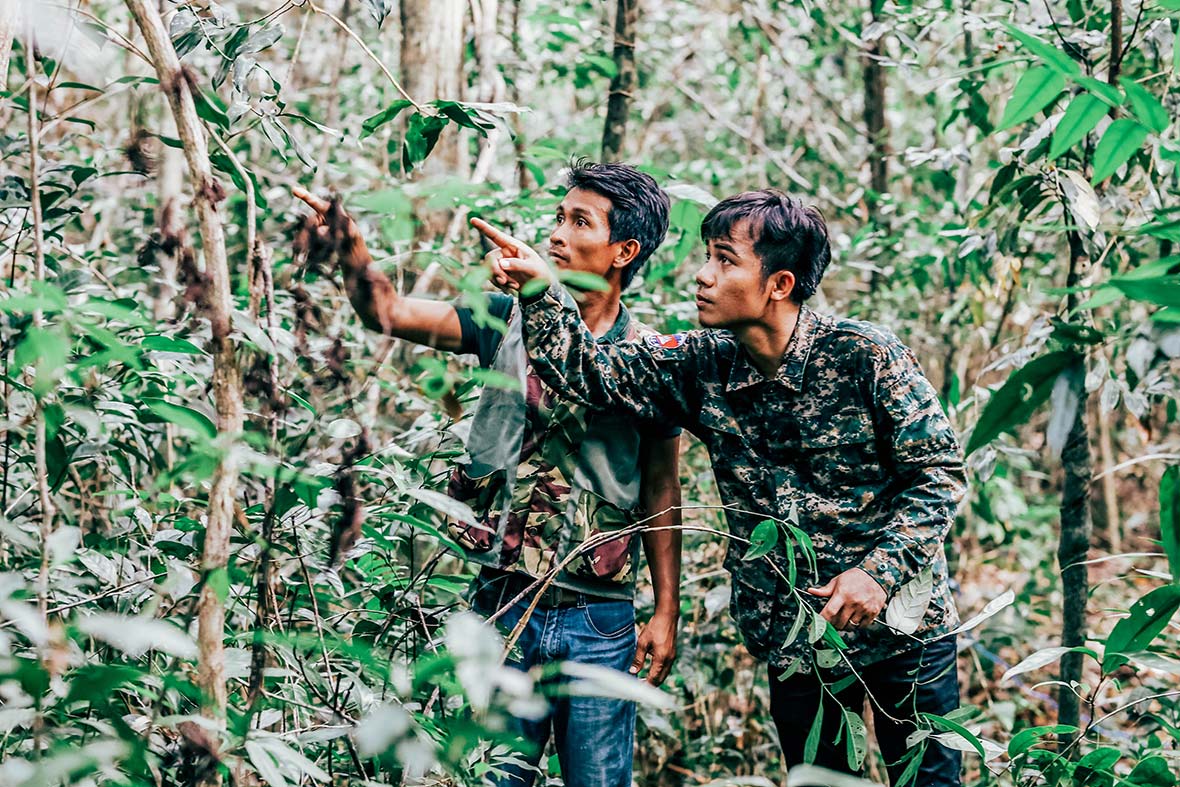
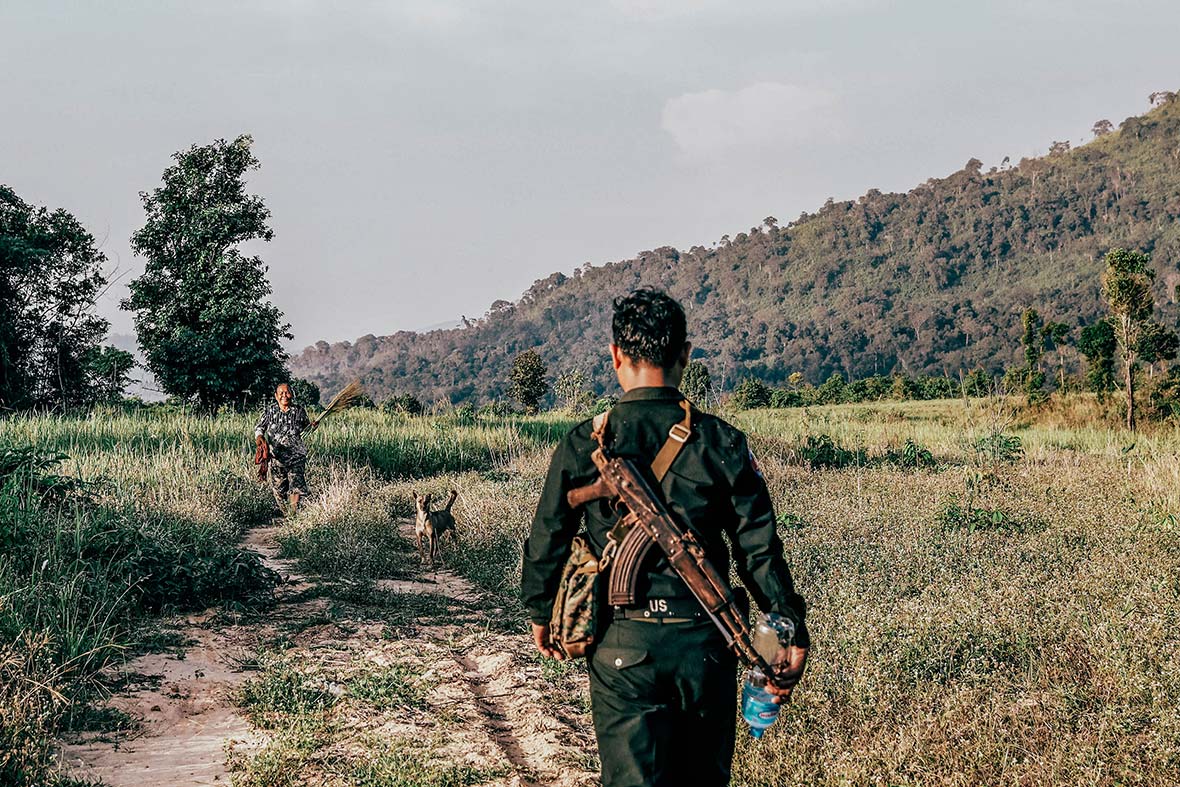
Even at full pelt, it is impossible not to be lulled by the languorous rhythms of Cambodian country life passing by outside the window. Flocks of egrets use water buffalo as launching pads towards the blue sky and giant river fish are hung out to cure outside roadside restaurants. Our only fellow travelers meanwhile seem to be ingenious souls using battered Honda motorbikes to transport giant panes of glass or baskets of chickens.
Things become more rough and ready when we join the main north/south highway and it’s not long before we pull into Sihanoukville.
‘Snookie’, as it is affectionately known by the legion of budget travelers who choose to overlook its slightly shop-soiled beaches in favor of its frequent parties and cheap accommodation, isn’t for everyone. Nevertheless, respite is close at hand in the shape of the string of islands that stud the Gulf of Thailand just offshore.
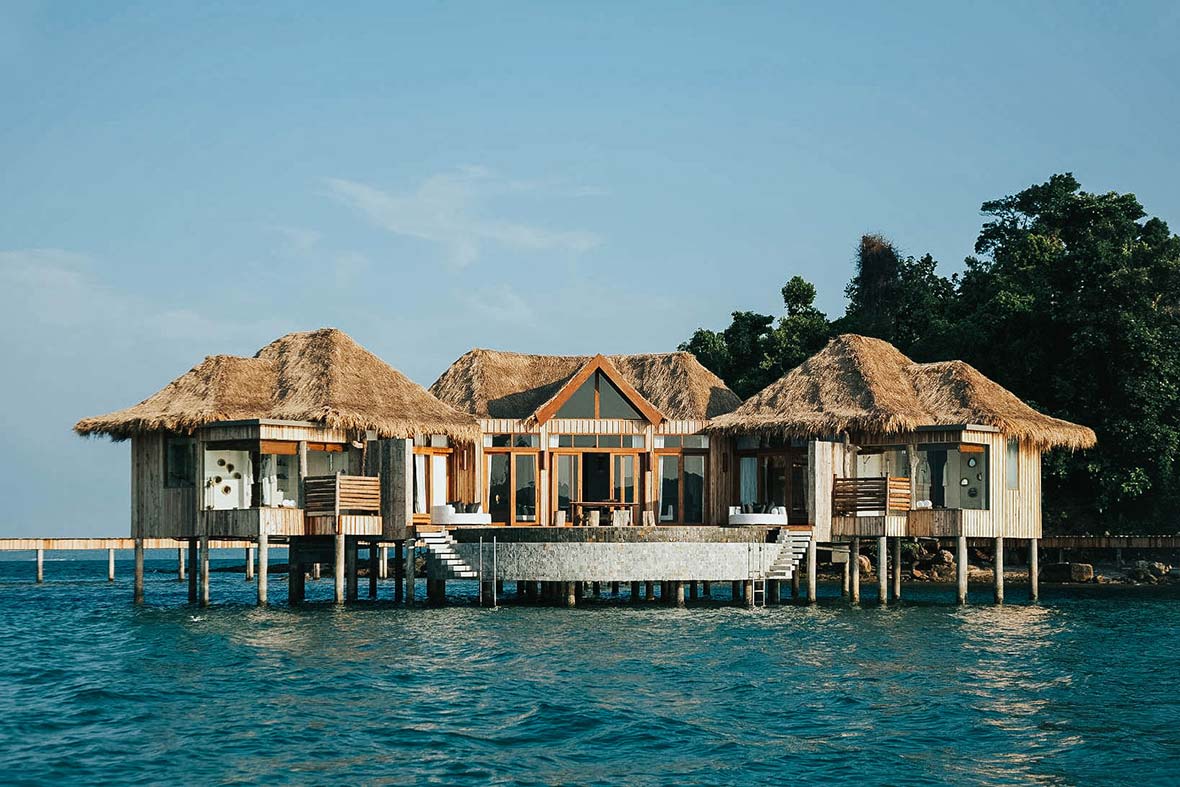
Outposts such as Koh Russei, Koh Ta Kiev, Koh Rung, and Koh Rung Samloem offer untouched island idylls. With long stretches of white-sand beach backing onto makeshift digs situated amidst jungle clearings, you could happily spend weeks polishing off the entire works of Dostoevsky (or Alex Garland) while swaying between coconut palms on a hammock.
Alternatively, if you are short on time you could spend a couple of nights at Song Saa. Occupying two diminutive islands at the far end of Koh Rung, the 27-villa development is one of Cambodia’s most appealing hideaways.
Having been dragged kicking and screaming from the poolside and bundled onto a speedboat back to terra firma, I resume my journey along Cambodia’s southern extremities.
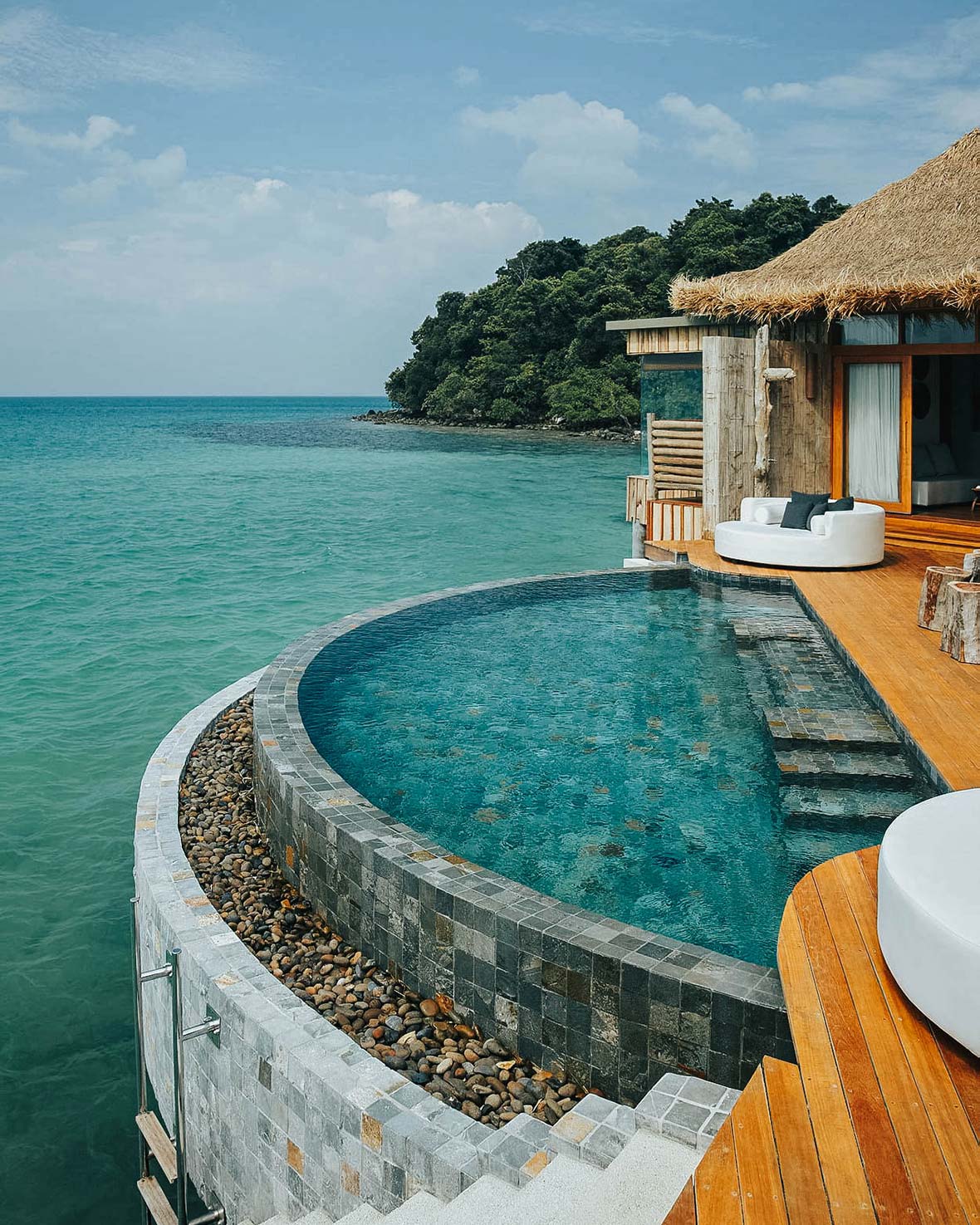
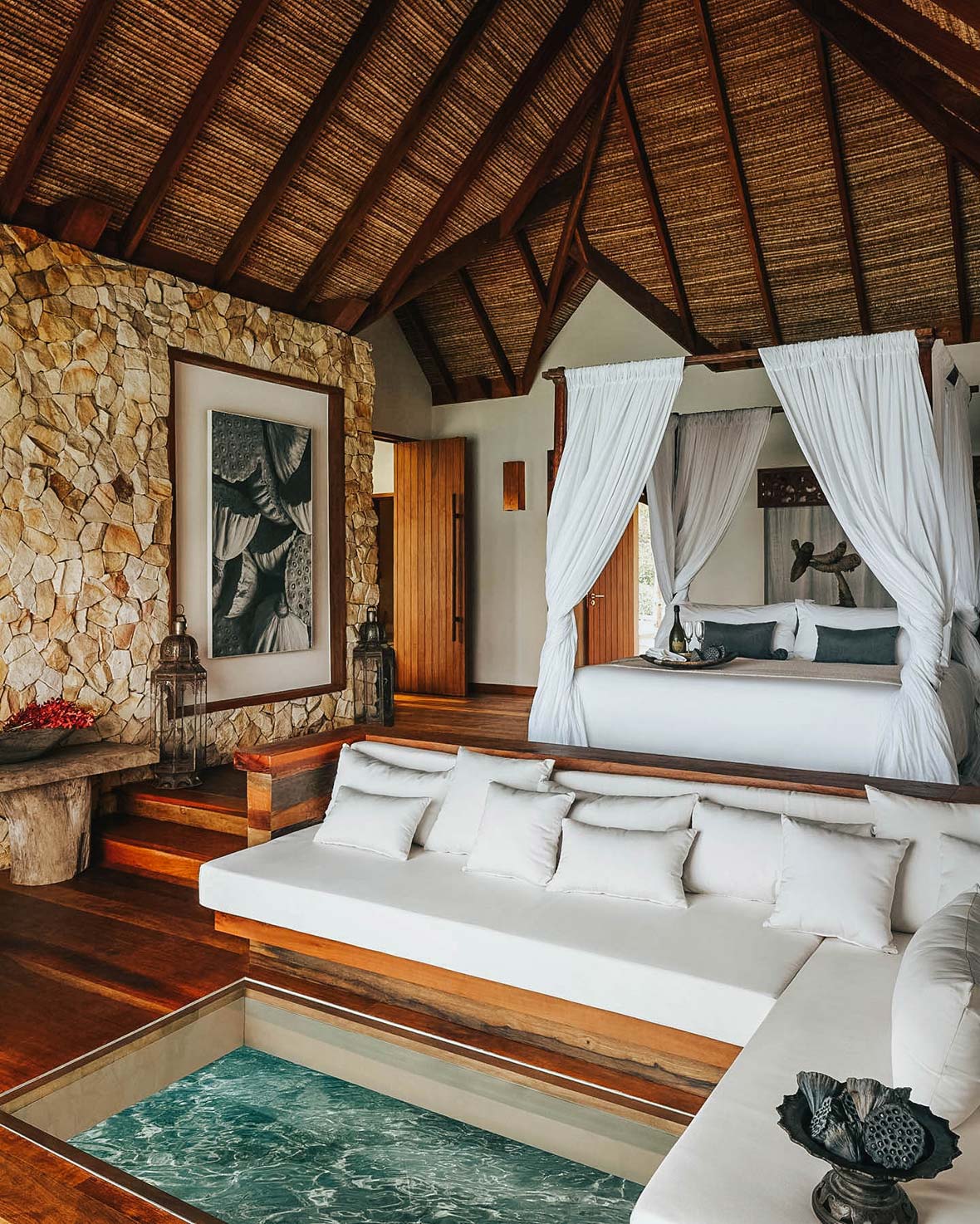
On the way to our final destination of Kep, the last notable settlement before the Vietnam border, we make a detour to Bokor hill station. Located over 1000 meters above sea level, the site has been both a retreat for French colonial types and a stronghold for the Khmer Rouge, who were only finally driven out in the early 1990s. A paved road has been built to the summit and the area is developing rapidly. However, the deserted buildings and fog-shrouded air of mystery that prompted actor Matt Dillon to use Bokor as the scene for the showdown in the movie City of Ghosts make this an atmospheric pitstop.
After lunch in Kampot, a provincial capital where life is about as fast-paced as the river that bisects the town, we make the short hop to Kep.
Like Kampot, Kep reeks of somnolence. During its heyday as Cambodia’s premier beach town, it was the favored place for R&R for the Khmer elite.
Sihanoukville usurped it as the nation’s sun, sea, and sand capital before the civil war. And the years of turmoil and bloodshed saw it slink back even further into obscurity – the shells of its grand old villas the only reminder of its starring role on the Cambodian Riviera.
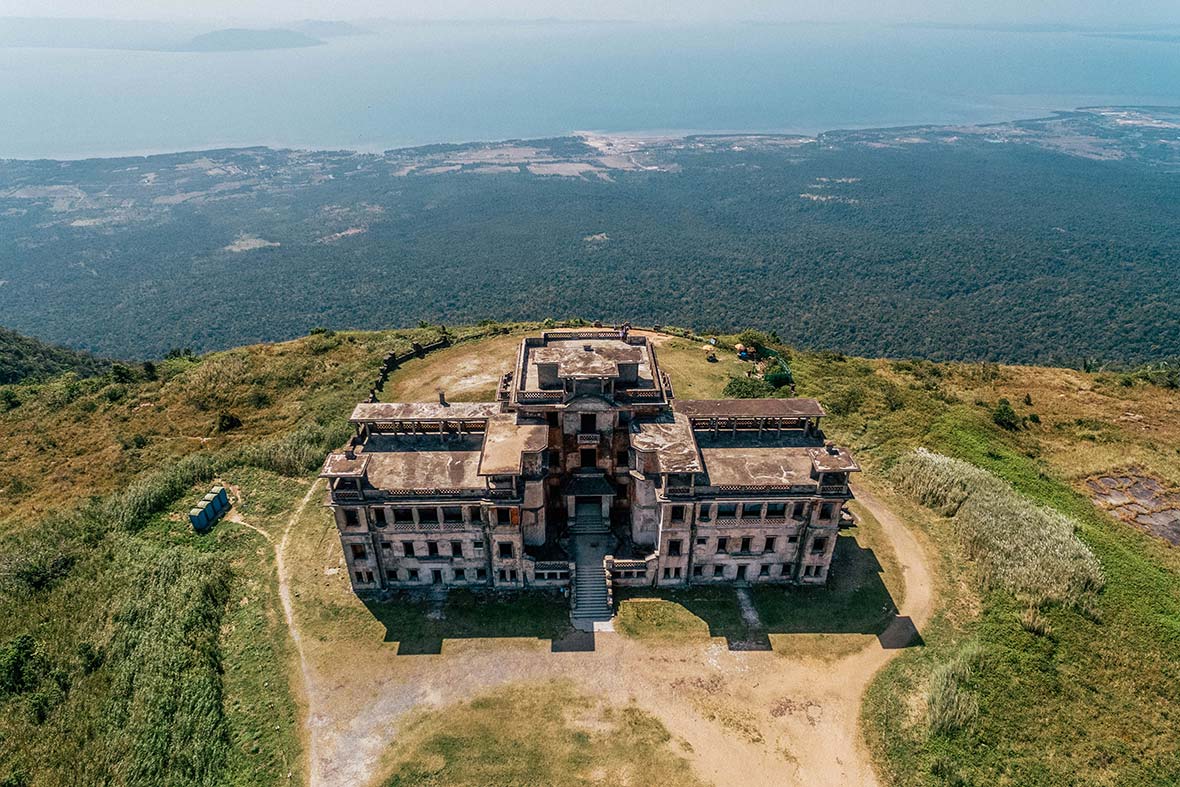
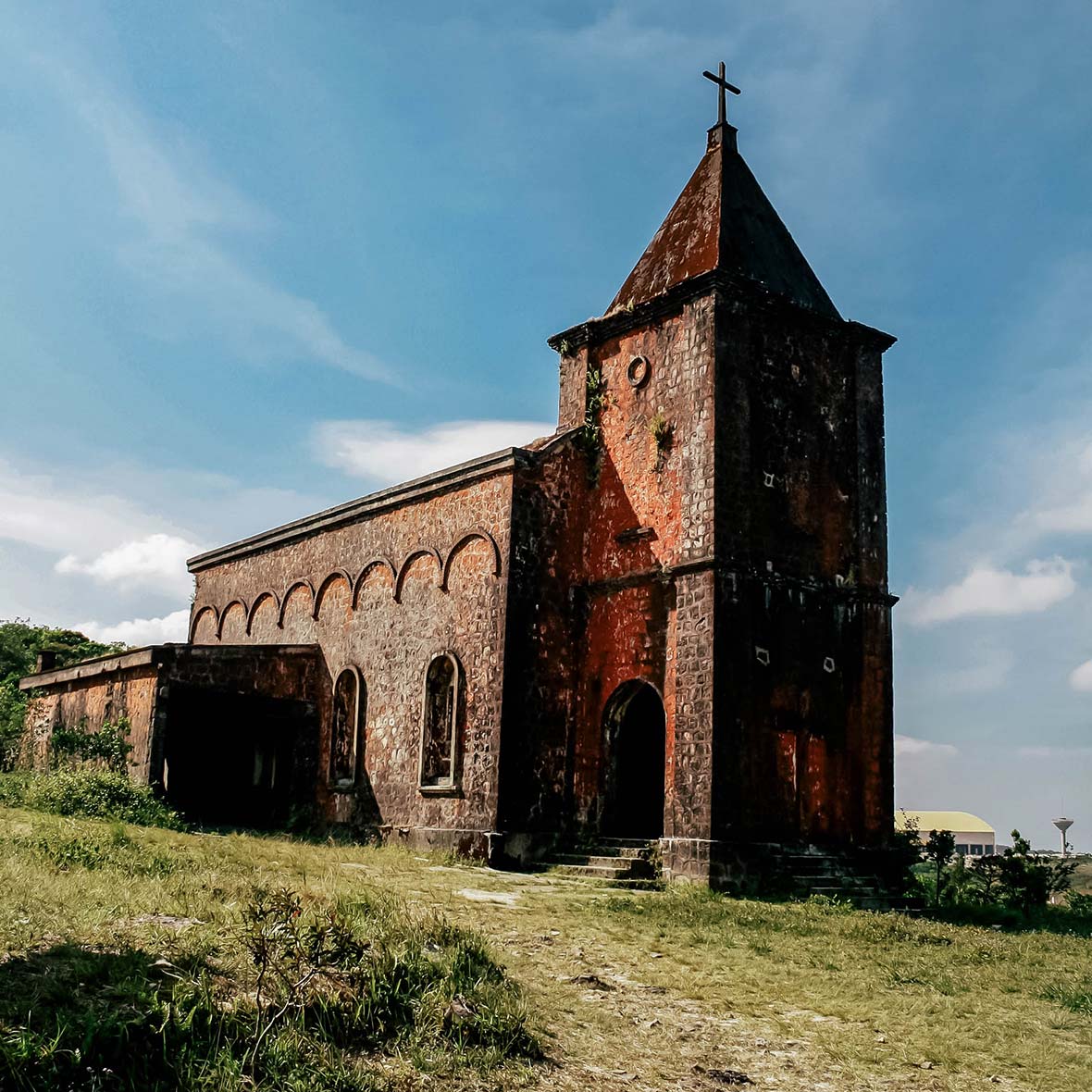
It has been in a perpetual state of semi-resurrection for the past decade or so. There’s still virtually nothing going on – a statue of a giant crab just offshore is about the extent of the tourist sights. And a big night out at one of the town’s couple of bars will likely involve you providing a much-needed distraction for the underemployed barmaids.
Despite its torpor (or perhaps because of it), there’s something about Kep that entrances. The gentle sea breeze is invigorating, while a string of boutique hotels—including the wonderful Knai Bang Chatt where we are ensconced—have sprung up in recent times, some breathing life into the derelict grand old villas.
There’s also the town’s crab market. A one-time secret, it has become a prime destination for gourmands due to its clutch of ramshackle restaurants’ way with crab and local Kampot green pepper. With the ocean providing a lulling soundtrack, we descend into a food trance, devouring a mountain of crustaceans and leaving an apocalyptic scene of discarded shells in our wake. It’s a messy, but appropriate, end to one of the region’s most hypnotic journeys.
